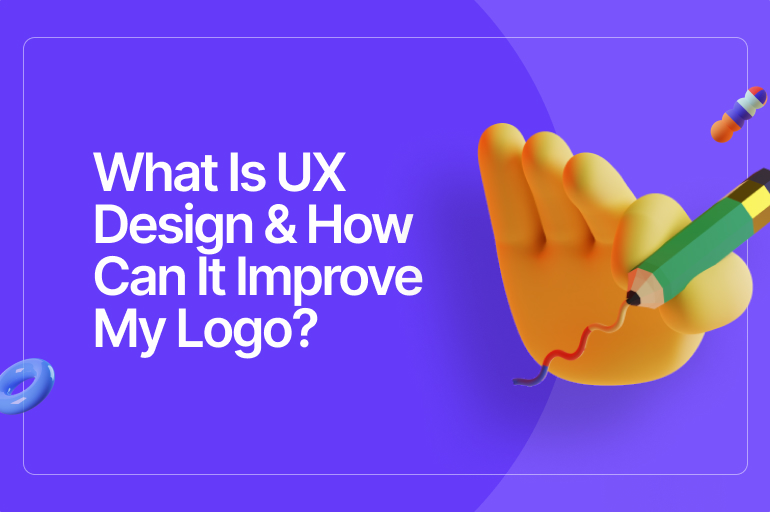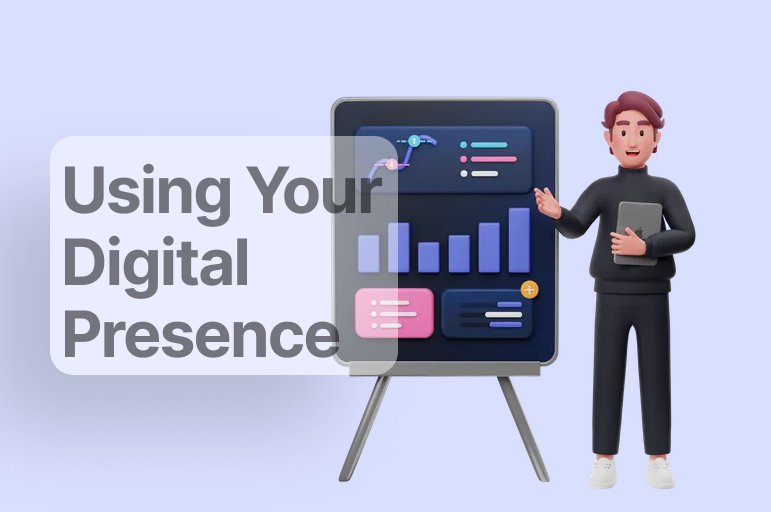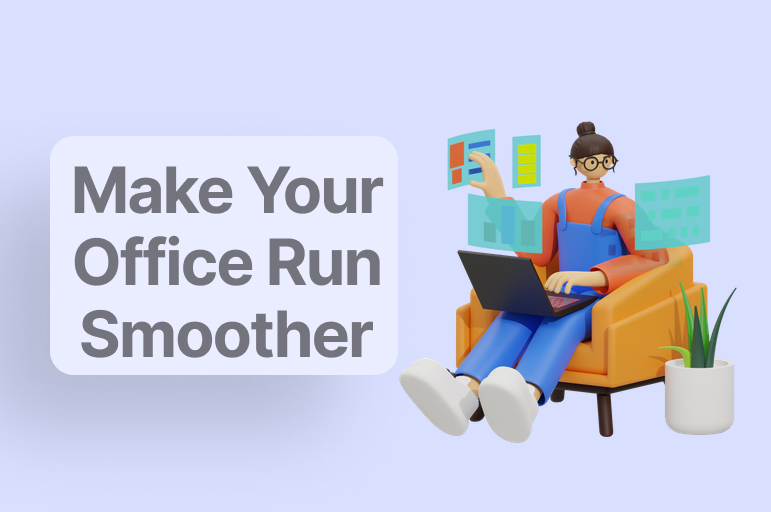Branding your business well is of paramount importance, especially in the competitive day and age that we live in today! You need to do everything in your power to make sure that your business stands out from the crowd, and an impactful logo design is a great place to start.
But, how can you make sure your logo stands out from the crowd? Well, applying UX principles is a wise move, and that’s something we are going to discuss in this post.
We will reveal everything you need to know about UX design, explaining how it works and how you can use it to enhance your business logo.
What is UX design?
User experience (UX design) is the process that design teams follow when they are creating products that offer a relevant and meaningful experience to the user.
Although we often speak about UX design in terms of website development, it can relate to any product or indeed branding material, including your logo!
UX design covers the entire process of acquiring a product and integrating it, including the various elements of function, usability, design, and branding. You can check out this user experience design definition for further explanation.
See also: Customers or Users’ X Design Skills: What Skills Do We Need to Become A Better UX Designer?
UX design goes further than UI design
You will often see the terms UI design and UX design used interchangeably, and this can cause a lot of confusion. However, they are two different things.
When we talk about UX design, we are concerned with the full process. The story begins before the ‘product’ in question is even in front of the user.
UX designers are not simply focused on creating usable products. They think about every single element of the user experience, such as fun, efficiency, and pleasure. This is why there is no singular definition of excellent user experience.
Similarly, according to Interaction Design Foundation, UX designers don’t just focus on creating products that are usable; we concentrate on other aspects of the user experience, such as pleasure, efficiency, and fun, too.
Consequently, there is no single definition of a good user experience. Instead, a good user experience is one that meets a particular user’s needs in the specific context where he or she uses the product.
Instead, a good user experience is one that meets the needs of a particular user in the specific context where he or she uses it.
See also: How Including Decals Will Boost Your Brand Awareness
Why logo design is important
Before we get into the details about how you can improve your logo with UX Design, it is important to establish why logo design is so important.
A well-designed logo helps you to create a sense of trust, and this is the sort of thing that makes people stay around.
Potential clients will know who you are, what you do, and the benefits that are associated with your business. This can all be conveyed through a logo!
Even if someone has no prior knowledge of your business, an excellent logo can convey that you are professional and do great work.
See also: UX Audit: What It Is, Why It Matters & 6 Steps for Doing It Right
How can you improve your logo with UX design?
Here are a number of different trends and approaches that you can consider if you want to use UX design ideas and principles to enhance your logo. So, let’s take a look at some of them:
Gradient logos
We are going to start off with a trend and idea that divides opinion; gradient logos. Gradient logos have a bit of a love/hate feeling. However, when they are done correctly, they can look incredible. You simply need to make sure you get it right.
If you do not use such a logo correctly, you can end up with something that appears cheap and tacky. You can’t simply blend two colors in a linear way, as used to be the case.
Instead, you need to get creative. And, the good news is that there are a lot of creative ways that you can apply gradients. For example, you can use an unorthodox combination of colors to create an edgy look or you can include more than three colors.
When deciding whether or not your logo should incorporate a multicolor blend, there are a number of things that need to be considered. You need to make sure that this is going to be appropriate for your target audience.
Aside from this, whether the logo is going to be used offline or online is also going to be important. After all, you need to be conscious of how difficult it can be to make sure such a logo looks incredible when on printed materials.
As is the case with any logo trend, it is all about determining whether or not it is right for you.
Animated logos
It probably does not come as much of a surprise to you to learn that animated logos are very trendy right now, and they represent a natural progression when you consider the tech-based world we live in today.
According to Redkite, with the continued growth of the e-commerce industry, we can expect to see more and more animation in branding. That means there’s even more reason to do this now, or risk getting left alone with a boring static logo in a sea of engaging competitors.
Static logos are no longer the standard. You should consider different ways of adding animation to your logo in order to stand out from the competition.
Of course, you need to do this in a careful and well-executed manner. The last thing you want is for your logo to give off those vibes of a secondary school PowerPoint presentation when someone always goes overboard with the visual effects!
When you consider the fact that animated logos can be part of cross-platform brand identity, it is not hard to understand their use. On the web, mobile, and social media, these logos can make a big impression.
Using animated logos presents a great way of engaging and entertaining people and it can also ensure that your logos are a lot more striking. This is critical now more than ever when you consider how short our attention spans are today!
Symbol-only logos
Another option that you may want to consider is a symbol-only logo. The classic logo anatomy involves a logotype and symbol that will work together as one.
Nevertheless, once a brand has become established enough, it will commonly abandon the logotype because everyone already knows the name of the company.
In other cases, particularly in the digital era, brands can have a number of different versions of their logos. Sometimes, a symbol will be sufficient, and in other cases, the whole thing is required.
Mailchimp is a great example of this. They add Freddie, their well-known mascot, to their logo recently. They can either write the company name out or they can use Freddie independently as a symbol in any size, looking just as good on a branded T-shirt as it does on a webpage.
The winking chimp animation offers another layer, which adds a friendly tone to their voice. All of this matters when it comes to delivering exceptional UX design with your logo and creating a brand that people can trust.
At this point, we see that a lot of well-known businesses have got to the stage whereby using their whole logo to advertise themselves is simply not necessary. It has become ingrained in people’s minds, so they do not need to use it again.
As a consequence, symbol-only logos provide another dimension to consider when enhancing the user experience. This gives you the adaptability to use whatever logo is suitable based on the medium and what the consumer needs, and that is what UX design is all about!
Responsive logos
We cannot talk about UX design without mentioning mobile responsiveness. After all, most people access the Internet via their mobile phones today. These devices overtook desktop computers for Internet usage a long time ago!
As people are going to be accessing your website and other online marketing materials from smaller devices, you need to consider this during the design process. If you have an intricate logo, with a lot of detail, it’s not going to translate very well to a mobile device, is it?
This is why a scalable logo is a necessity. Whether it is on a pen, digital screen, or billboard, your logo must be recognizable and you need to ensure that there is visual consistency of your brand’s identity across every medium.
Minimalistic logos
Last but not least, minimalistic logos can be very impactful. According to DesignBro Logo White, simple and elegant, minimal logos have the power to connect instantly. These logos pack a powerful punch right on the face of the customers.
A clutter-free logo has a deep impact on the user’s mind since it is refreshing and registers quickly. Minimalism indeed is a golden key that only the best designers possess. The brain simplifies even complex structures.
Minimalism uses this very theory to create the simplest of designs. Minimal logos are simple yet classy and can help in setting any brand apart from the crowd. Besides that, we are bombarded with visuals and information all day long, which is why extreme simplicity and clarity become so important.
Technology giants are taking a move away from their traditional logo designs and instead they are looking to create predictable and neutral logos. This is an organic process that results from these businesses that operate across a number of platforms, audiences, and markets.
A flat and simple typeface, like Sans-Serif, makes sure that logos can be scaled better and quicker. Because of their neutrality, Sans-Serif logo designs also appeal to a much wider audience because they can fit into a cohesive brand identity experience.
When you factor this into account, it is not hard to see why a lot of brands are moving to more generic logotypes, which send a direct message to consumers: we are convenient, adaptive, and clean.
Maximalist logos
The modern consensus among designers is to create clean, simple, and minimal logos, as mentioned in the first point. In contrast, some artists might argue that logos are becoming too simplified in recent years, compromising the recognizable characteristics of brand identification.
During the past decade, the KISS principle produced a lineup of monotonous and too-polite logos.
To truly stand out and provide a clearly recognizable, unique identity, logo designers will veer into the realm of maximalism. Many complexes, sharp, and vibrant visual elements are already emerging in general brand design to counter the dominant minimalist style.
It is currently an experimental movement that is gaining more and more momentum in brand identity, eventually settling into logo design. Startups and up-and-coming companies will try to communicate their rebellious brand with more experimental, counter-cultural directions by providing artistic chaos through their logos.
Unique Styles
This year’s hottest UX design trend, 3D, will continue into 2022. Mac OS Big Sur has also introduced icons with 3D effects, which may inspire designers to try them out.
In the age of more powerful technology and new tools like Spline (a new 3D design tool currently in beta), creating 3D graphics is becoming easier and easier. Despite this, integrating 3D graphics into mobile and web interfaces is a challenge that requires a lot of practice.
While 3D is eye-catching and visually appealing, it is also time-consuming. It is only worth your time and effort to design a trendy 3D logo if it fits your brand identity and adds to the user experience.
See also: Best Website Design Trends for An Impressive User Experience
Final words on UX design and improving your logo
So there you have it: everything you need to know about the importance of UX design and how you can use this to improve your logo.
Businesses today need to do everything in their power to brand effectively and stand out from the competition. An attractive and professional logo is one of the best ways you can do so.
Let’s visit RRSlide to download free PowerPoint templates. But wait, don’t go anywhere and stay here with our RRGraph Design Blog to keep up-to-date on all the best pitch deck template collections and design advice from our PowerPoint experts.

Atreyee Chowdhury works full-time as a Content Manager with a Fortune 1 retail giant. She is passionate about writing and helped many small and medium-scale businesses achieve their content marketing goals with her carefully crafted and compelling content. You can reach her at atreyee.c@gmail.com for any content writing/copywriting requirements.





